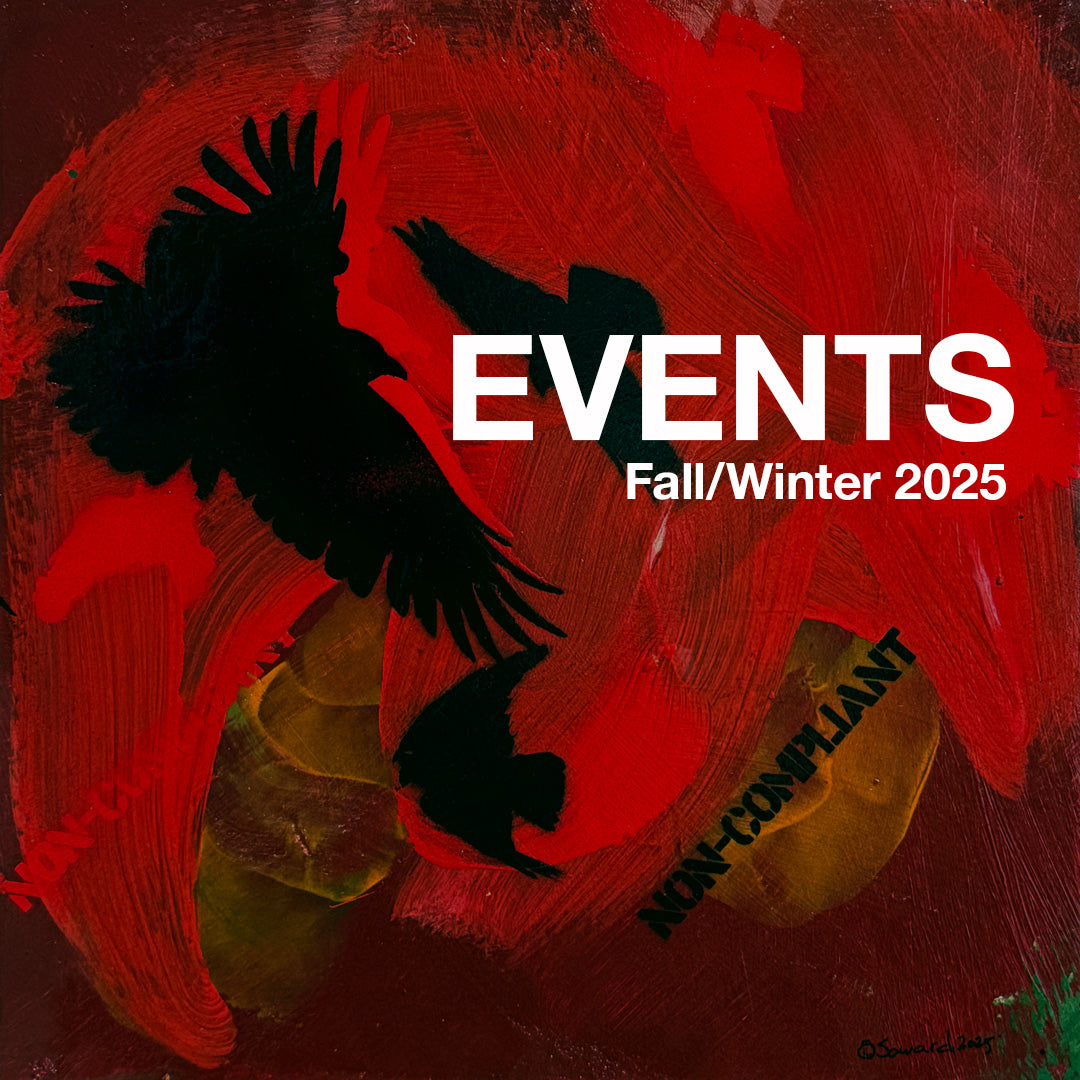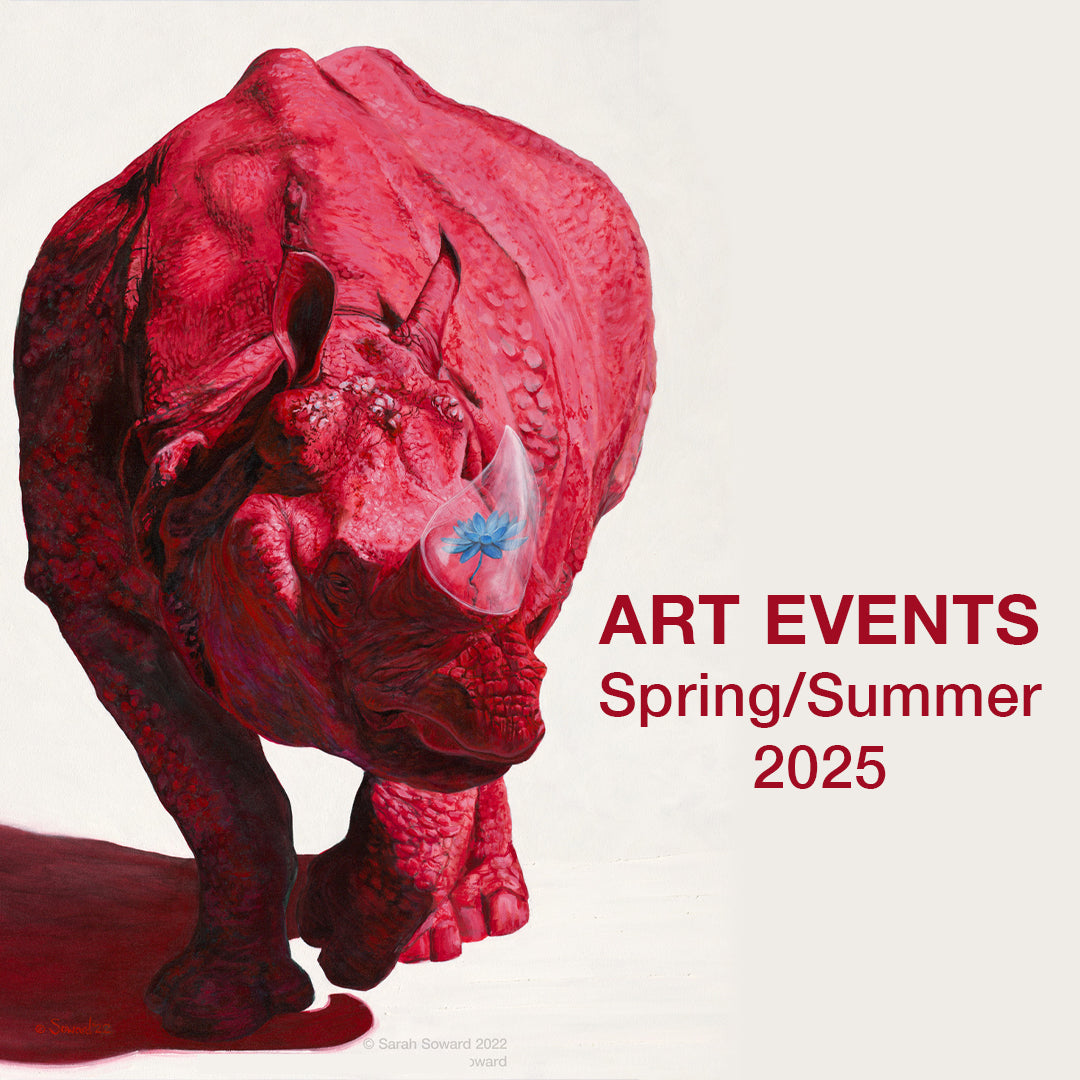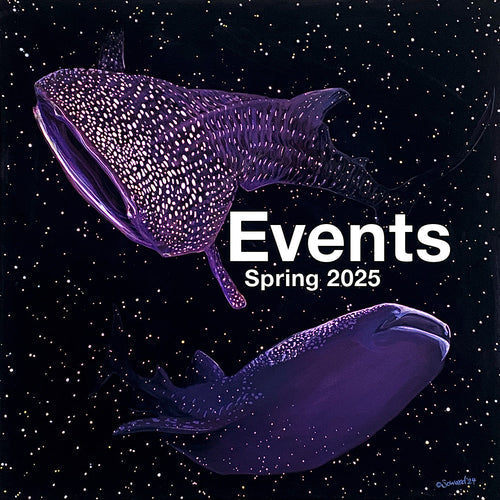Mercury, Timelapse Video
Transcript for Mercury Video on YouTube
Hi, my name is Sarah Soward and this is my painting, Mercury.
You’re watching the creation of the painting, starting at the beginning of the process—the initial drawing—all the way through to the end. You get to see how I start a painting and how many layers of paint it takes to get the kind of effects I’m after. For this particular painting it took a lot of layers to get what I wanted, particularly on the elephant.
The reason the painting is composed the way it is, the reason there are birds with the elephant, and the elephant is walking on the backs of the birds, is that I’m trying to relate the planet, Mercury, to the roman deity the planet is named for. Some of the observations about the planet line up pretty well with the mythology of the god. For instance, the planet, Mercury, is the fastest in our solar system and the Roman God, Mercury, was known for swiftness. He was a messenger deity, the god of travelers, and more. I chose to focus on the motion and speed aspects of the stories of the deity. It was important, then, for me to include a representation of his winged sandals, of his Talaria. I didn’t worry about the helmet or hat he wore. I didn’t worry about the staff, but I wanted some depiction of the wings.
Rather than just putting wings on the back of the elephant or on the feet of an elephant I decided it would be more interesting g if I had a flock of birds also traveling with the elephant, traveling with Mercury. This way the elephant could walk through the sky. As the birds get tired other members of the flock could come in and take over and keep the elephant moving, keep the messages flowing, keep the planet moving through space—however you want to think about it. Because, really, your interpretation is at least as important as mine, if not more so. I create an image with a story and I look at it as a starting point for thought.
The colors and the way the light is hitting the elephant has a lot more to do with the planet than the deity.
The planet really doesn’t turn very quickly. One day on Mercury is approximately 58 or 59 earth days. So, one part of the planet is facing the sun for a very long time as it ever so slowly revolves—ever so slowy revolves. To show the idea of that, I made a strong, somewhat extreme, definition between the highlight and the shadow areas of the elephant. I was intentionally a little more mellow about the lighting on the birds.
The colors I’m used are inspired by color enhanced versions of photographs of Mercury that were taken by the Mercury Messenger. According to NASA’s website, nasa.gov, the images were enhanced to better show the differences in minerals, iron content and the like on the surface of the planet. Most images of Mercury that I saw were more subtle than I wanted my representation to be. I wanted to portray the fast moving, speedy, decisive Mercury that’s moving on his way, stands out from the background, gets things done. I really wasn’t looking for muted, subtle colors and was excited to see that I didn’t have to just make up my color choices from nothing but that I could base my choices of hues—of color—on data collected by scientific tools for scientific purpose.
I joke sometimes that I like to use my whole brain, left and right side working together as equals. It really isn’t a joke. I like Science, Technology, Engineering, Art, and Math. I like to put them all together as I am able. And I figure, why not throw in a little history of world cultures while I’m at it? Maybe entice people to love an endangered species or two?
I’m not an expert. I’m someone who loves to learn, to do, and to share. So as I keep learning, I’ll keep sharing.
Okay, I think I’m done talking for now.
-End Transcript-


